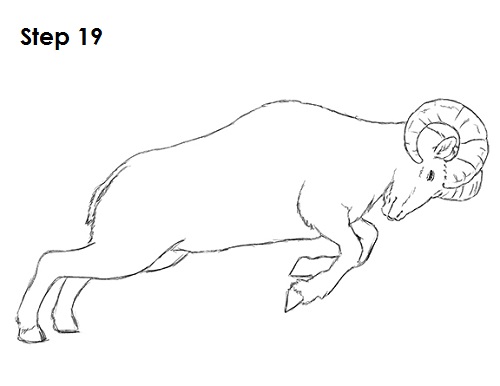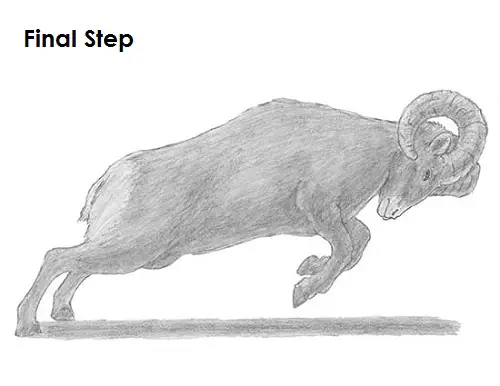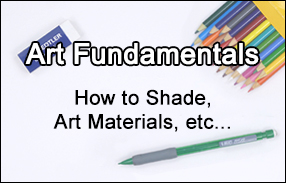
Step 15: Draw the ram's horn on the other side under the first one. Simply draw a curved line under the first horn that extends toward the back of the head. Add a few lines within the shape of the horns for extra detail. Follow the path of the horns as you draw the lines to give them a rough bony texture.

Step 16: Use the lines under the body as guides to draw the legs that are on this side. Lightly sketch the shape of the ram's leg as you follow the path of the line. When you get the structure of the leg right, darken the lines. Make the joints a bit rounder where the guide line bends and add the hoof at the bottom. Now use the line on the left as a guide to draw the hind leg on this side of the body. Remember to sketch lightly as you follow the guide and only darken the lines when you get the structure right. The top part of the hind leg should be thick. Make the joints rounder and add the hoof at the bottom.

Step 17: Use the remaining shapes and lines to draw the rest of the ram's body. Add a few extra lines on the left side of the body, above the leg, for the tail.

Step 18: Draw the set of legs on the other side of the ram's body by using the first set as a template. Sketch lightly at first as you duplicate the shape of the leg. The lines for the legs on the other side shouldn't overlap with the lines for the legs on this side.

Step 19 (optional): For a cleaner look, erase as much as you can of the initial guide lines. Don't worry about erasing all of the guides. It's okay to leave some behind. Re-draw any final sketch lines that you may have accidentally erased.

Final Step (optional): Add some shading to your ram drawing to give it more dimension and volume. Pick the direction of the light source when shading so that the shadows are consistent with it. Vary the pressure on your pencil to get different degrees of tonal value. Add the value lightly at first, then gradually buld up to the level of darkness that you want.
Add a cast shadow underneath. This helps emphasize the charge and jump of the ram. Use a darker value near the middle of the shadow and a lighter value along the edge for the shadow's diffusion.
You can add more value throughout your ram drawing for extra detail. Bighorn sheep's coats are a solid color without any pattern, so use a single value for the entire body. Add the value by using strokes that go in the general direction of the fur. Bighorn sheep can have thick coarse fur, so don't worry too much about adding the coat smoothly. A little texture is okay. The rump of bighorn sheep usually tends to be lighter than the rest of the body, so add a light value here. Don't forget to pause the "How to Draw a Ram" video after each step to draw at your own pace.
Thanks for visiting! Subscribe to the How2DrawAnimals YouTube Channel for a new tutorial every Tuesday.
To learn how to draw popular cartoon characters, visit EasyDrawingTutorials.com.
RELATED TUTORIALS
 |
 |
 |







